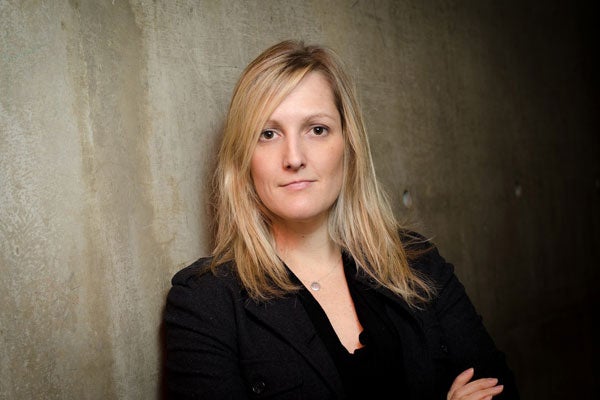
Parapan Am coaching: how autonomy and intrinsic motivation are keys to athletic success
Published: August 18, 2015
The Toronto 2015 Parapan Am Games treated spectators to fierce competition, with Canadian competitors bringing in 50 gold, 63 silver and 55 bronze medals.
University of Toronto physicians and therapists, physiotherapists and experts were there to help athletes recover between competitions. But what about the preparation and strategy needed to support athletes long before the competition – and well after they cross the finish line?
Catherine Sabiston, associate professor and Canada Research Chair in Physical Activity and Mental Health, focuses on exercise and health psychology research. She studied the top approaches employed by coaches that work with Paralympic athletes. That includes motivating and empowering athletes so that they continue coming back to the sport.
“If an athlete is more intrinsically motivated they are more likely to turn a loss into motivation to achieve,” Sabiston said. “In those cases athletes are not likely to lose their sense of identity or their desire to play because of a sense of defeat.”
U of T News spoke with Sabiston about her study on autonomy support and intrinsic motivation when coaching Paralympic athletes.
What are coach autonomy support and the mastery-oriented approach to training?
Autonomy-supportive behaviour means using tactics and structure to help people learn while feeling like they have choices and can control their environments. One example would be teachers offering different strategies for students to learn so that they feel that they have a choice. In sports, it’s driven towards helping athletes learn and develop skills, so it’s about mastery and choice versus winning at all costs and competition. It’s more about the process, not the outcome.
There are many different strategies that coaches take. They range on a continuum from very ego-oriented and competitive to the mastery-oriented, autonomy-supportive approach that helps foster much more positive outcomes in athletes.
Through the mastery-oriented approach, athletes feel really competent in the skills and strategies that they need to succeed in their sport, as well as their own personal goals and what success looks like. Coaches are putting the emphasis on the subjective experiences of each athlete and are offering opportunity for small successes and failures, and reinforcing the choices. There are individual differences of course between what athletes prefer – some athletes want to be told what to do.
The idea of mastery is very important for para-athletes because the strategies of being told what to do often doesn’t work for athletes – depending on different levels of function, the athletes find out what works best for them through trial and error, choices, and some structure that lets them develop as elite athletes.
What were some of your discoveries about coach autonomy support in para-athletics?
We conducted one study from the athletes’ perspectives on coach autonomy support and intrinsic motivation of Paralympic athletes. We found that those who had more perceptions of autonomy from their coach and support staff showed highest levels of intrinsic motivation.
Intrinsic motivation, which is basically involvement for the inherent pleasure, enjoyment, and interest in the task, is what we strive for in sports. Those athletes stay involved in the sport, but they also become involved in their communities – in organizations supporting sport – as officials and coaches. They thrive in success and defeat.
In our findings, coach autonomy support is very important for the athletes’ perceptions of their own autonomy and connectedness. In these mastery environments, athletes feel that they have more control in their own sport, as well as a higher sense of relatedness, to both their team members and other athletes in their field.
In another study, we looked at the role of coaches of wheelchair rugby in the development of athletes with a spinal cord injury. Those coaches provided a ton of examples of the sense of relatedness among teammates. Athletes who felt autonomously supported would stay connected to sport, beyond their practice. They would go out to rehabilitation centres to recruit other new athletes.
How have Para-athletics changed over the years?
We see the same things at the Parapan Am Games as in the Pan Am Games – a mix of skill and attitude and confidence. There are the same undertones of strategy that takes place in the Parapan Am Games and Pan Am Games, with more complexity based on managing the rules of para-sport and strategies for all levels and types of disabilities to perform at the highest level. The dynamics of coaching para-athletes is empowering. As a result, you see more and more athletes who want to get involved in all levels for para-athletics.

